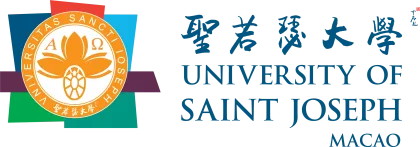Abstract
Utilizing eye-tracking technology and focusing on the “rapid”, “purposeful” and “comprehending” attributes of fluent reading, this study investigated first language (L1) and second language (L2) readers’ online reading patterns and comprehension. Eye movement data from nine L1 readers and nine L2 readers were collected, analyzed and compared. Post-experiment interviews were conducted to obtain demographic and background information. The results indicate that L1 and L2 readers are heterogeneous when language proficiency is considered but they are homogeneous in many other aspects when the focus is on their online reading patterns and comprehension. While L1 readers read much faster than L2 readers, their attention distribution and performance on reading comprehension test are similar to L2 readers’. This study concludes that the essential online reading competency factors are similar in L1 and L2’s online reading when the “rapid”, “purposeful” and “comprehending” attributes of fluent reading are under investigation. When the core vocabulary of a language is mastered, it is metacognitive reading skills that play a major role in fluent reading in the context of new literacy.
Introduction
Because of the advent of the Internet and Information Communication Technologies (ICTs), today’s knowledge and information are frequently presented, distributed, received and decoded in hypertext format. This development trend has greatly challenged traditional literacy research and practices because hypertext offers the opportunity to process information in nonlinear and multiple formats (Slaouti, 2002). These features of hypertext make reading online a very elective process and makes online reading “a self-conscious act of creating knowledge from a variety of sources” (Landow, as cited in Warschauer, 1999; Reading/Research section, para.2). Mastering new literacy skills, strategies and dispositions, hence, become the necessity for today’s readers to succeed in their online reading activities. As said by Leu, Kinzer, Coiro, and Cammack (2004), “comprehension processes, decoding processes, and what ‘counts’ as literacy activities must change to reflect readers’ and authors’ present-day strategies for comprehension and response” (p.1572).
A growing body of literature investigates the differences between conventional literacy and new literacy activities, dispositions of new literacy (Leu et al., 2004), online reading skills and strategies (Chang, 2005, Singhal, 1999), factors affecting reading comprehension (Warschauer, 1999), among others. Given the shifting literacy experience, second language education needs to respond accordingly. It is not wise to rely on old techniques for developing second language education. Nor should we assume that same models exist across old/new literacy divide. While many literacy studies indicate the benefit of cross-referencing literacy research on first language (L1) and second language (L2) readers to understand new literacy phenomenon (Grabe, 1991), there is a dearth of empirical studies specifically designed to compare L1 and L2 readers’ new literacy in general and their online reading patterns and comprehension in particular.
The purpose of this study was, therefore, to compare L1 and L2 readers’ online reading patterns and comprehension to better understand “fluent reading” (Grabe, 1991) in the context of new literacy. According to Grabe (1991), “fluent reading is rapid, purposeful, interactive, comprehending, flexible, and gradually developing” (p.378). These six attributes of fluent reading encompass different components of reading literacy. “Rapid”, “purposeful” and “comprehending” emphasize reading efficiency and effectiveness; “Interactive”, “flexible” and “gradually developing” call for attention to concrete and ever-changing reading activities and strategies. Because of the lack of research on online reading efficiency and effectiveness, as noted in the literature review below, we developed the following three research questions to specifically address online reading efficiency and effectiveness:•
“Rapid” – How fast can L1 and L2 readers read?•
“Purposeful” – What do L1 and L2 readers read and how much do they read?•
“Comprehending” – How well do L1 and L2 readers perform on reading comprehension test?
Research design
Equal number of American readers and Chinese readers were recruited to participate in this study. Because the reading material was written in English, the American participant group was labeled as L1 reader group, and the Chinese participant group was labeled as L2 reader group. Both groups were given the same reading material and were asked to complete the same reading comprehension test at the end. The reading was an introduction of The Transactional Distance Theory developed by Michael Moore
Results
The findings from data analysis showed more commonalities than differences between L1 and L2 reader groups. The self-reports of topic knowledge from L1 and L2 participants confirmed that none of them had prior knowledge on the selected online reading topic before participating this study. This helped to control the impact of prior knowledge on their reading processes and their performance on the comprehension test because content schemata has been considered as a major factor affecting reading









